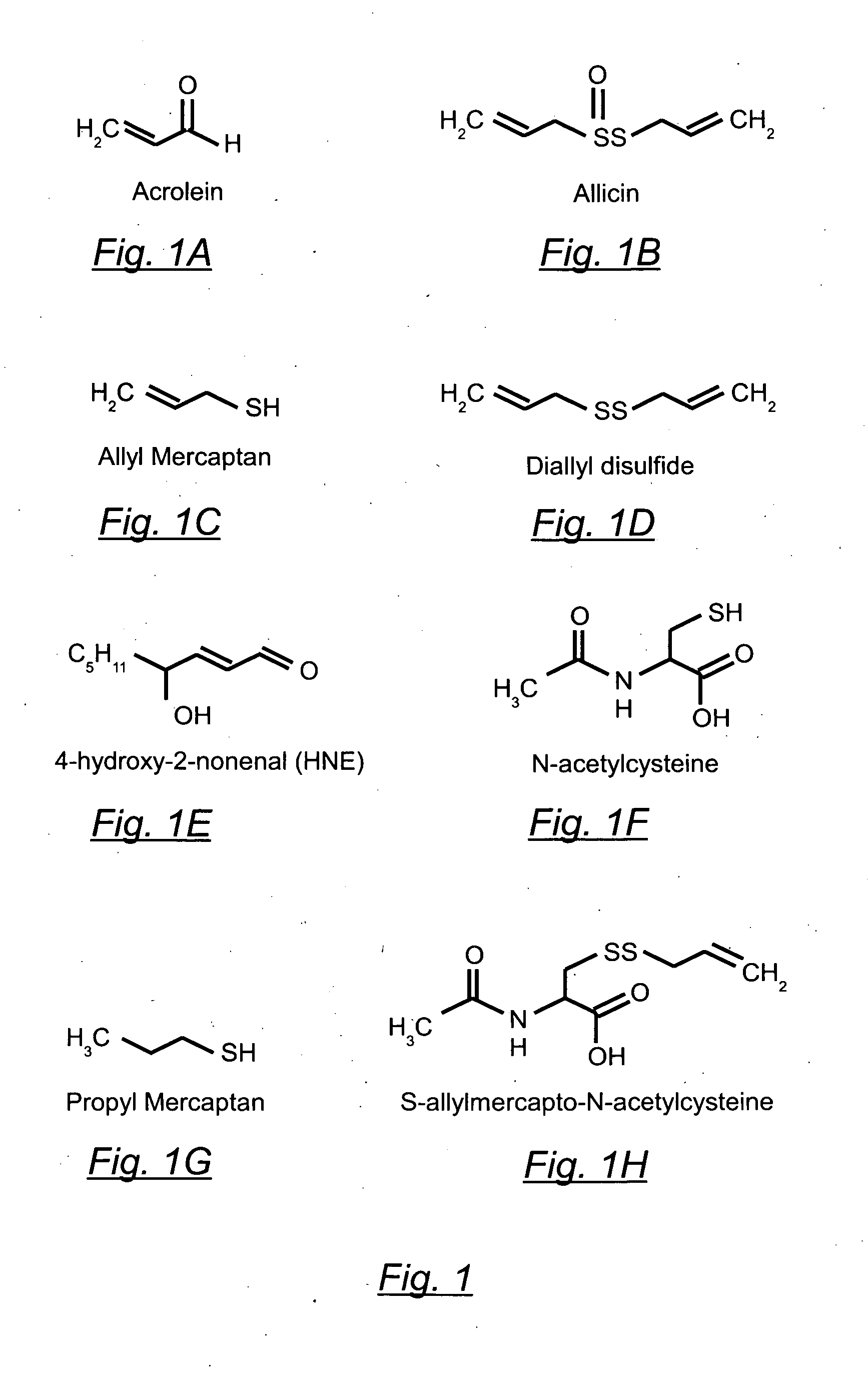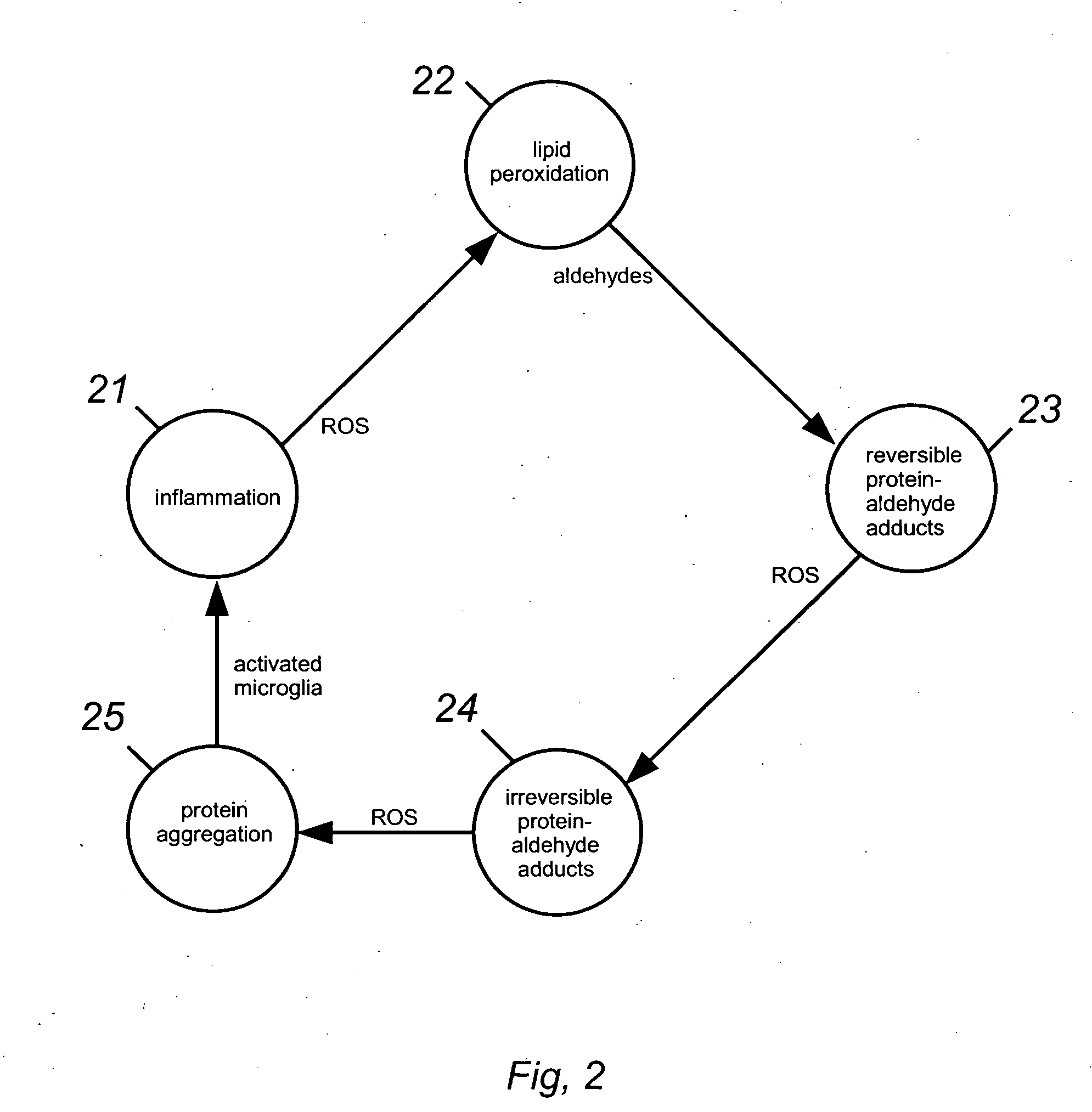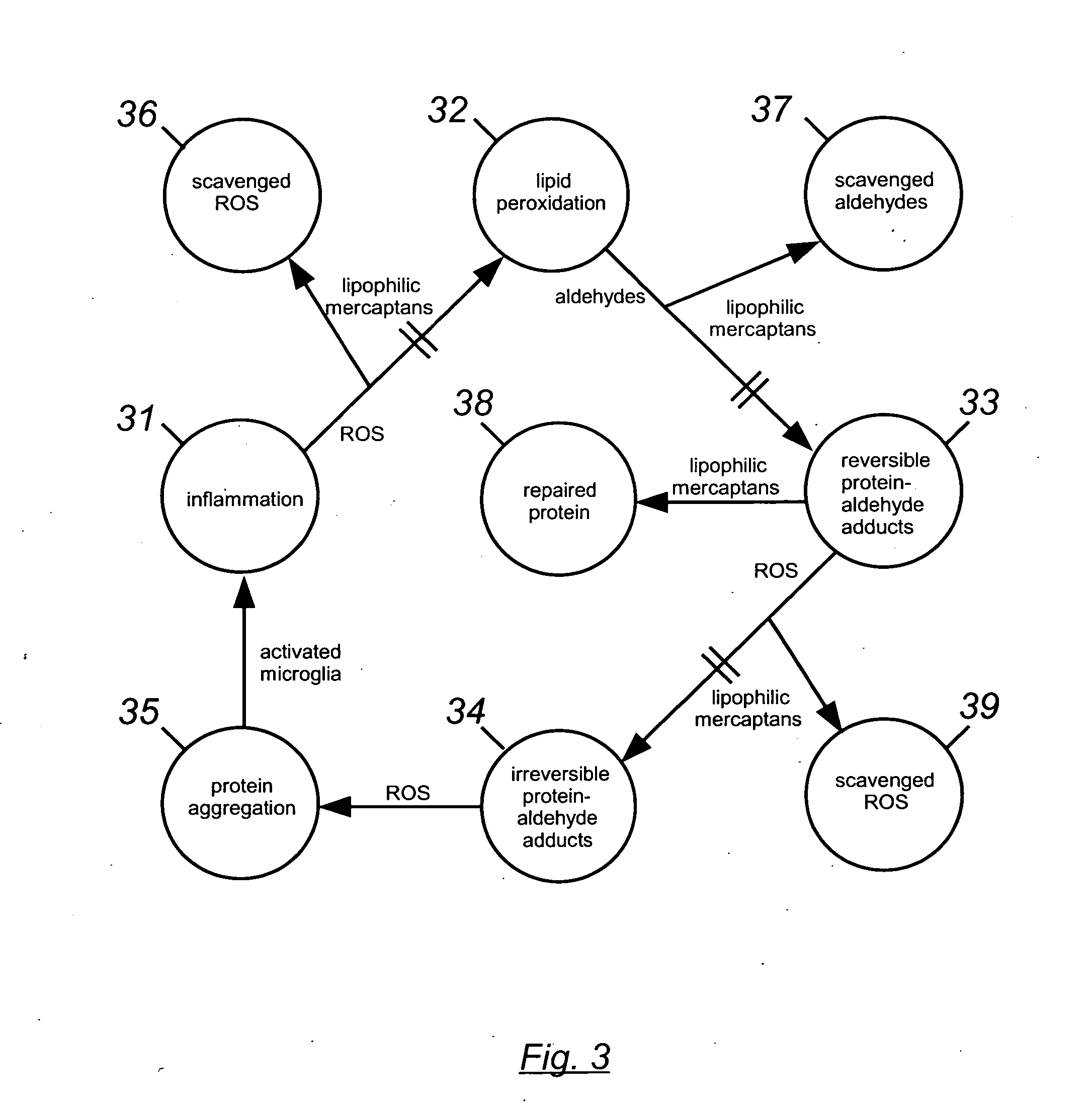Organosulfur Compounds for the Prevention and Treatment of Neurodegenerative Diseases
a neurodegenerative disease and organosulfur compound technology, applied in the field of organosulfur compounds, can solve the problems of volatile mercaptans and smelly, and achieve the effects of accurate determination, significant antioxidant effect, and reduced risk
- Summary
- Abstract
- Description
- Claims
- Application Information
AI Technical Summary
Benefits of technology
Problems solved by technology
Method used
Image
Examples
Embodiment Construction
6.1 Detoxification Pathways
6.1.1 In Biological Systems, Aldehydes Preferentially Attack Sulfhydryl Groups
[0096]This is a good place to start the detailed description, because whenever free SH groups are available, they are first in line for being attacked by aldehydes. For example, although HNE will readily react with the amino groups of proteins (see FIG. 5A) in the absence of available SH groups, experiments show that for concentrations of HNE from 10−5 to 10−3 M, and for a duration of several hours, the HNE will attack “practically only sulfhydryl groups” (QP801.A33S3:4). Compared to the reaction with amino groups, the reaction with SH groups “takes place much faster, in fact by several orders of magnitude” (QP801.A33S3:5). At neutral pH and room temperature, the reaction rate with SH groups is approximately one mole per second (QP801.A33S3:27). Note that because the reaction with an amino group is spontaneously reversible, any such reactions that occur will soon be reversed, and...
PUM
| Property | Measurement | Unit |
|---|---|---|
| lipophilic | aaaaa | aaaaa |
| molecular mass | aaaaa | aaaaa |
| chemical | aaaaa | aaaaa |
Abstract
Description
Claims
Application Information
 Login to View More
Login to View More - R&D
- Intellectual Property
- Life Sciences
- Materials
- Tech Scout
- Unparalleled Data Quality
- Higher Quality Content
- 60% Fewer Hallucinations
Browse by: Latest US Patents, China's latest patents, Technical Efficacy Thesaurus, Application Domain, Technology Topic, Popular Technical Reports.
© 2025 PatSnap. All rights reserved.Legal|Privacy policy|Modern Slavery Act Transparency Statement|Sitemap|About US| Contact US: help@patsnap.com



